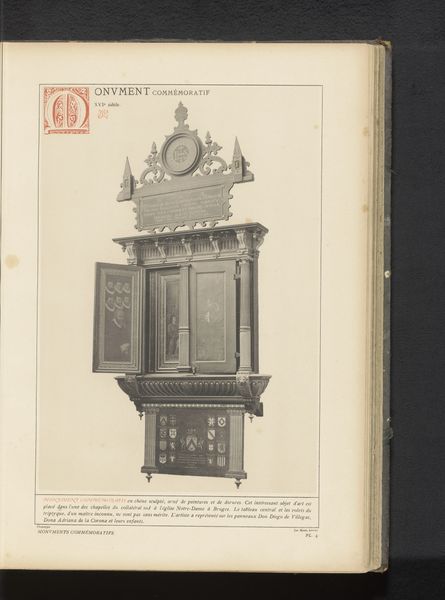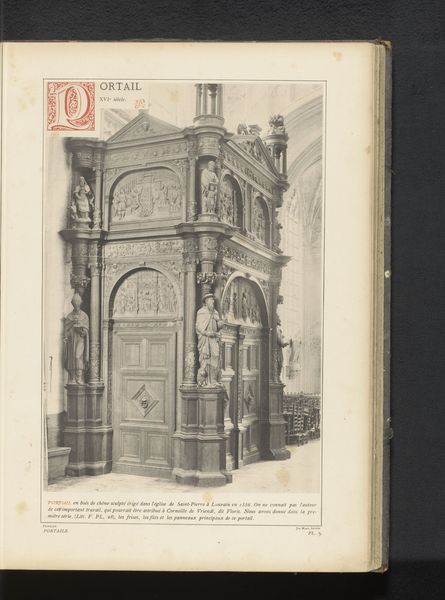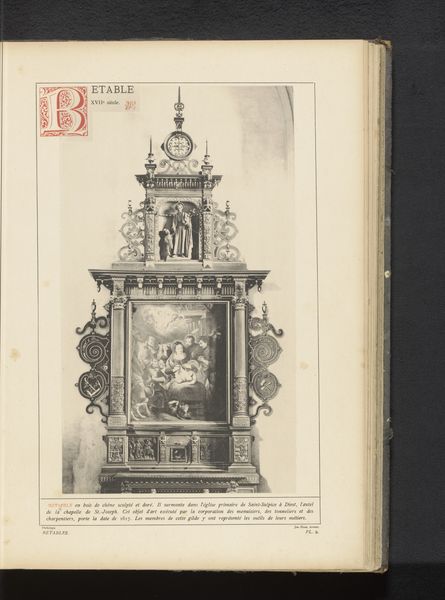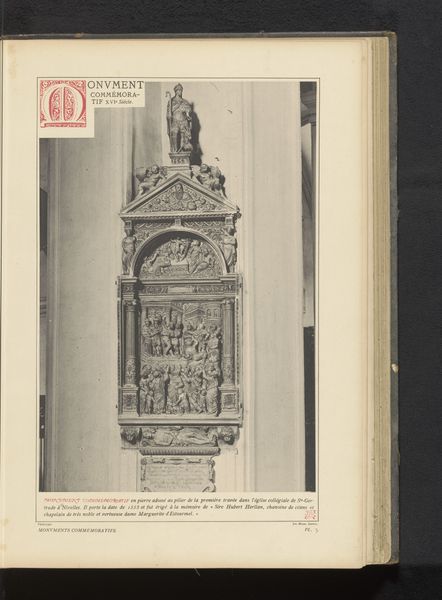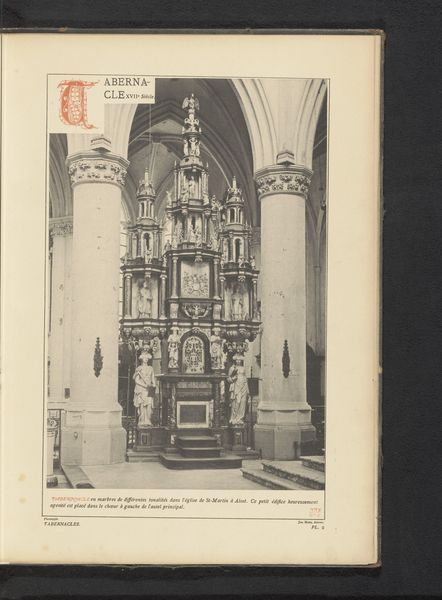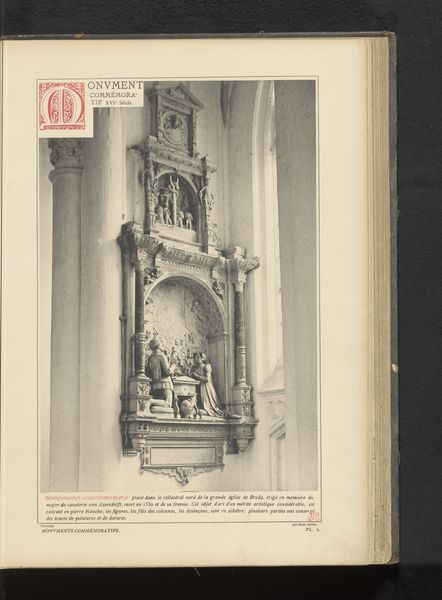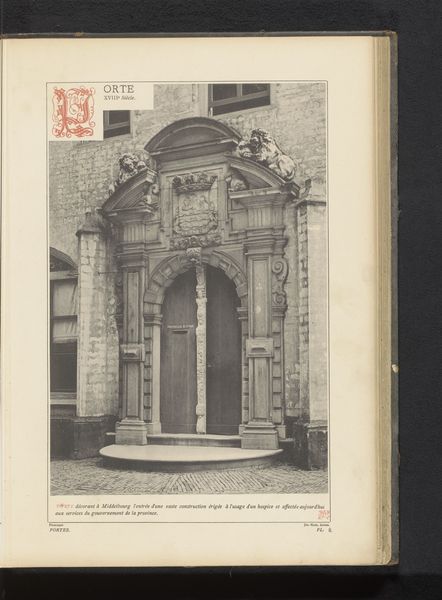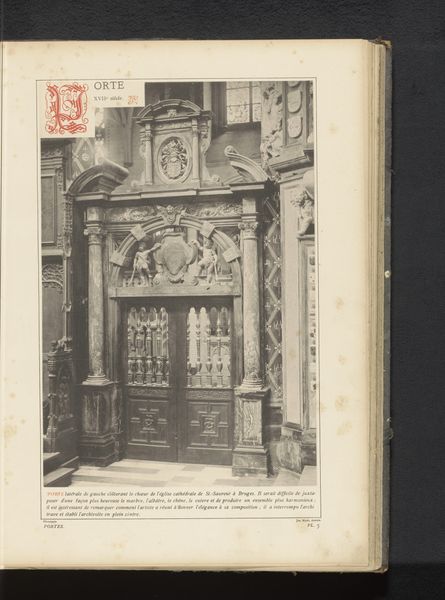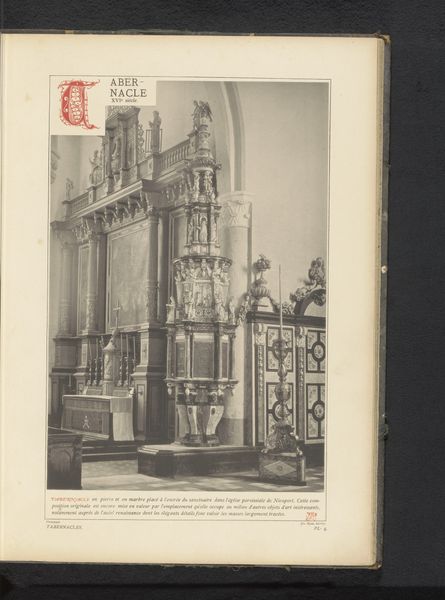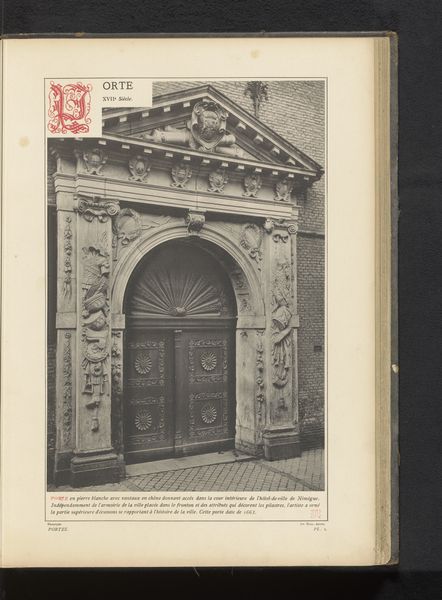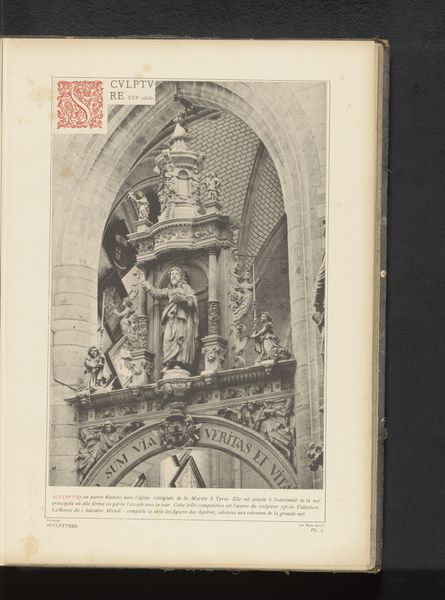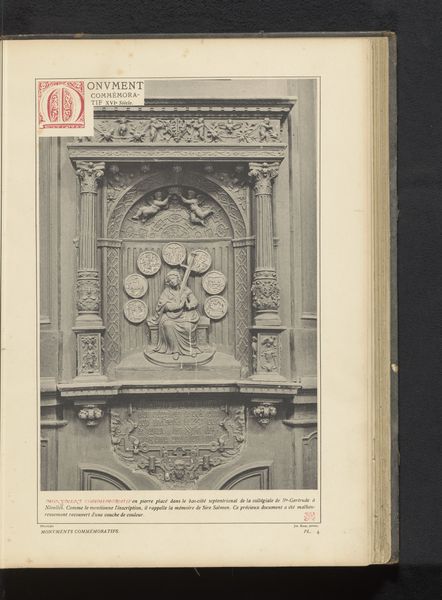
print, engraving, architecture
#
medieval
# print
#
engraving
#
architecture
Dimensions: height 341 mm, width 235 mm
Copyright: Rijks Museum: Open Domain
Curator: Here we have an engraving of the "Herdenkingsmonument in de Grote Kerk te Breda," or the Commemorative Monument in the Great Church of Breda, dating from before 1889. Editor: The crisp, formal rendering gives a sense of stately somberness—though I can also clearly see this memorial carries within it strong gothic vertical elements striving for something divine. Curator: Indeed. The print's monochromatic palette heightens the contrast, emphasizing the intricate textures and geometric articulations that mark its imposing structure. I am particularly intrigued by the calculated balance of the piece. Observe the interplay between its various vertical and horizontal registers and see how your eye is lead to read the monument. Editor: Those classical flourishes are all working towards something: symbols of civic pride, memory, sacrifice. I wonder who this memorial was dedicated to? Do we know the story, the history behind its creation? Curator: It’s likely dedicated to someone of great civic import within Breda. Its careful integration into the church, along with its symbolic complexity suggests someone of great import, likely a local aristocrat or religious figure of significance. The work’s impact is reinforced by the inscription— although partly illegible—that grounds the image. Editor: True, the architectural and sculptural symbolism act as a historical script for those who could read its visual language—a potent medium in a largely illiterate society. Note how the image aims to elevate, memorialize. Its physical form— rendered with such care and precision— reinforces that message and attempts to transcend temporal reality. Curator: Exactly. The calculated symmetry and the stark lighting further emphasize this transcendence; in rendering such dimensionality via engraving the artists gives a real feeling of solidity, almost defying the two-dimensionality of the print medium. It serves its memorial function not just through the explicit imagery but through its constructed pictorial space, which is at once immediate and timeless. Editor: I see it similarly— this print carries not just the likeness of stone and mortar, but something of their eternal aspirations and cultural meanings too. Curator: A potent reminder of how both structural elements and symbolic intention fuse to give enduring artistic meaning to an architectural image.
Comments
No comments
Be the first to comment and join the conversation on the ultimate creative platform.
